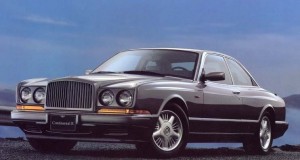
Would you pay $4,500 for a 1997 Bentley Continental R. That's all one owner got for the luxury sedan, originally priced around $300,000, as a Cash-for-Clunkers trade-in.
My friend Ralph had to spend a Saturday afternoon in his garage getting his old beater running again before he could trade it in under the recently-concluded Cash-for-Clunkers program.
And he wasn’t alone. The federal program, formally known as the Cash Allowance Rebate System, was designed to get older, gas-guzzling, pollution-spewing clunkers off the road by offering owners $3,500 or $4,500 vouchers, depending on the mileage they were trading in on. And, by and large, that was a pretty good deal for most of the roughly 800,000 vehicles the government got off the road.
But government records suggest that at least of the few of the trade-ins might have drawn a fair bit more if their owners had really looked for the best possible deal. And some of the so-called “clunkers” were pretty exotic and potentially desirable collector cars.
Among the vehicles traded in was a 1997 Bentley Continental R which, the Detroit Free Press notes, originally went for a solid $300,000. Our own quick search of the Internet shows similar models going for anywhere from $40,000 to more than $100,000. Why would someone take just $4,500? Maybe the payoff for a bitter divorce? A pair of bad reading glasses? Hard to tell, but surprisingly, that was by no means the only vehicle seemingly traded in for a fraction of its potential value.
Other vehicles on the list included a 1997 Aston Martin DB7, a 1992 BMW 850i, a 1999 Mercedes-Benz C43 AMG and a limited-edition 2008 Ford F-150 Foose pickup customized by Chip Foose. Another buyer traded in one of only 547 Buick GNX Grand National muscle cars ever built.
The list of oddities includes the fact that 37 vehicles traded in through the Clunkers program were less than a year old. Considering that the typical car loses less than a quarter of its value during the first 12 months, it’s hard to figure how someone came up with that decision.
And while the goal of the CARS program was to get older gas guzzlers off the road, how to explain the fact that there were a number of Minis, Scion xDs and other small, fuel-efficient models traded in, along with the big Lincoln Town Cars and Chevrolet Silverado pickups.
Unlike a traditional trade-in, the government required that Clunkers be “killed,” by replacing their engines’ oil with a sodium silicate mixture that would typically seize up within a matter of minutes. The carcass was then supposed to be shipped off to the junkyard, stripped of usable parts and accessories, then crushed and shredded for recycling.
Was the program worth it? Remember the old adage about asking a dozen economists for their forecast? Well, the debate over the program’s cost and benefits will likely go on for some time. But one thing seems certain: after pushing new car sales to near pre-recession heights, the market has plunged back to doom-and-gloom levels, as TheDetroitBureau.com reported, earlier today.
